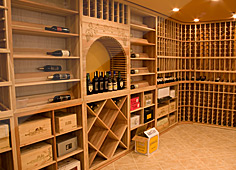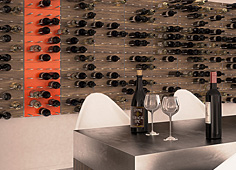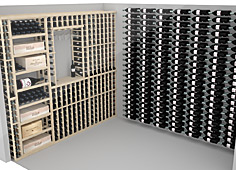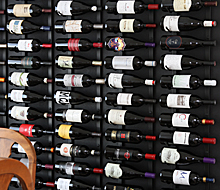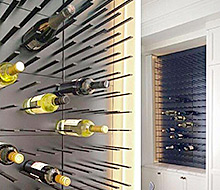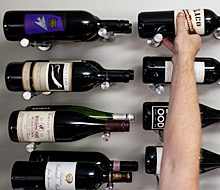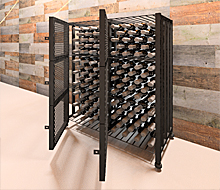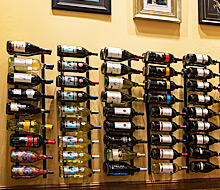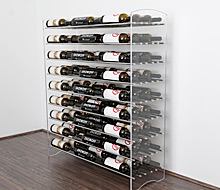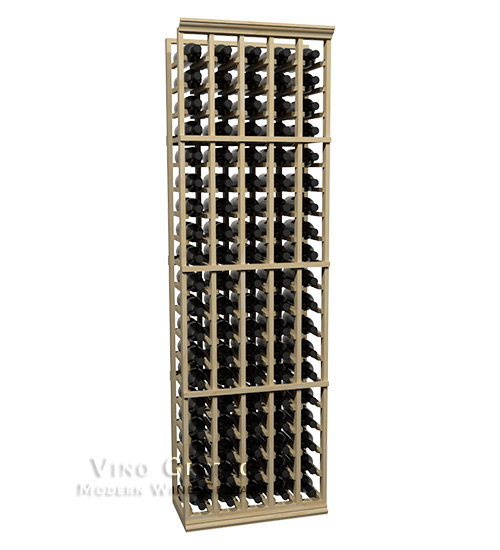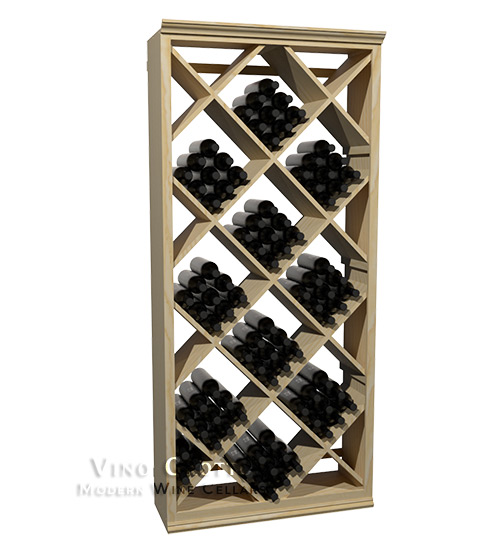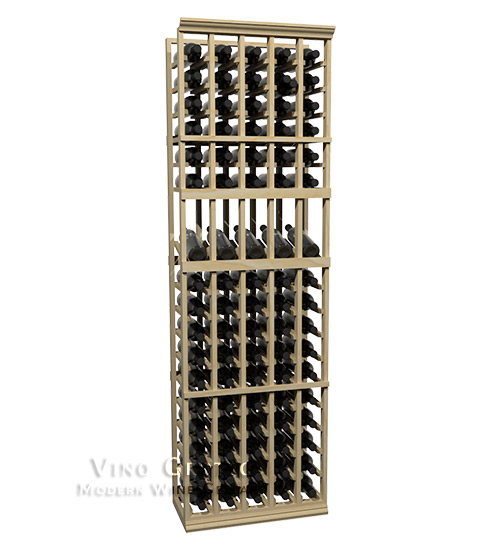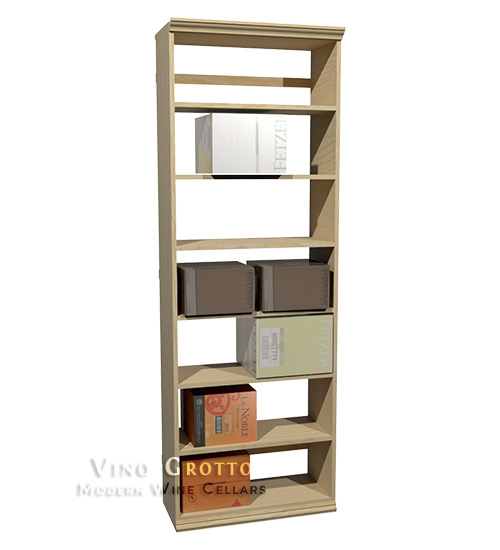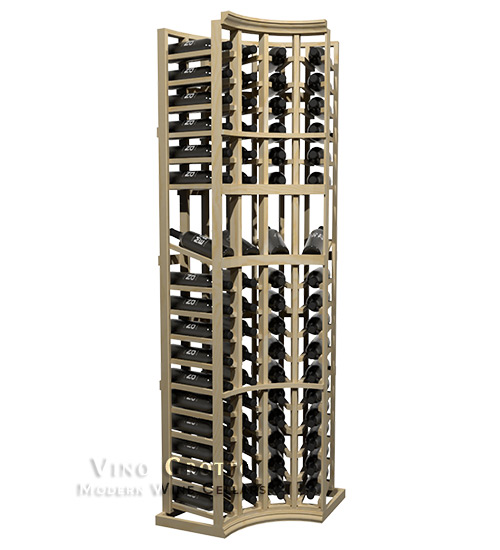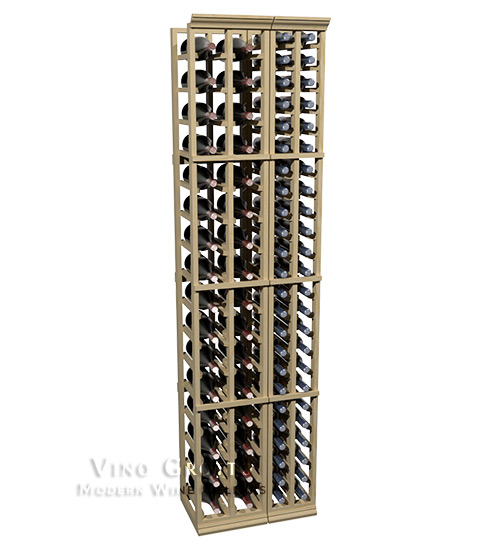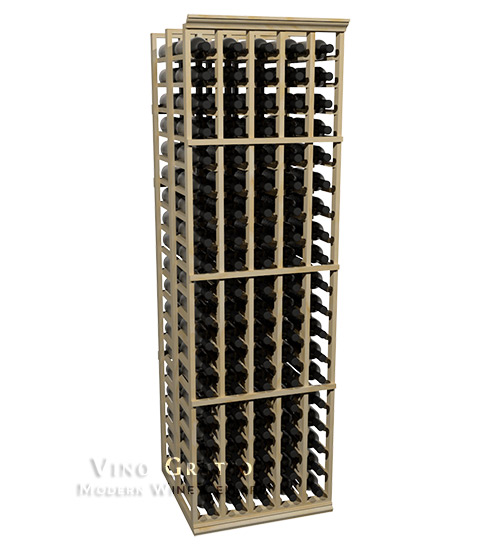The Wine Cellar Guide
DIY Wine Cellars
Wine cellars are a great way to add value to your home and create a space to enjoy wine and entertain guests. Traditionally, if you wanted to make a wine storage room, you'd have to contact a local contractor to make a custom and expensive solution for your space. Vino Grotto created a modern solution for wine cellars by creating modular systems which let you do it yourself affordably without sacrificing the luxury look.
Wine Cellar Goals
Form vs Function
People shopping for a wine cellars usually have one of two goals: "Show Off" or "Bulk Storage".

Show Off wine cellars focus on flair and style and less on total bottle capacity and cost per bottle.

Bulk Storage wine cellars focus on the maximum number of bottles possible in a given space at the best cost per bottle price.
Wine Cellar Types
Passively Cooled Wine Cellars

Passively cooled wine cellars are built in rooms that are naturally humid and chilly. Usually they are surrounded by 2 or 3 walls of earth and located in climates known for temperate weather year-round. These wine cellars have little maintenance cost and won't fail even if the power goes out. Unfortunately, if there is variance in temperature/humidity where you live (or you don't have a convenient subterranean space available), you likely will need an active wine cellar.
Actively Cooled Wine Cellars

Actively cooled wine cellars, typical for most people, use cooling units and insulation to keep the room refrigerated at an ideal wine storage humidity and temperature. As part of construction, these rooms need proper insulation, a vapor barrier and properly sized cooling unit. As you might expect, there is ongoing maintenance costs associated with operating an active cellar such as electricity and cooling unit replacements.
Building Your Cellar
As you build your wine cellar you should keep insulation and climate control a priority throughout the process. An improperly insulated and installed wine cellar can be a costly nightmare to maintain and can even risk your wine stock. It's expensive to replace overworked cooling units and even more costly (not to mention the health risk) to tear out mold-infested walls.
Framing

- 2"x6" for walls
- 2"x8" for the ceiling
The frame of your wine cellar should allow for insulation and installation of a vapor barrier (assuming you're not using a closed-cell foam).
When possible, every part of your cellar should be built The goal should be to create a sealed room that can survive a humid environment over the course of time.
The ideal frame for your walls should be at least 2"x6"
Vapor Barrier & Insulation

Vapor Barrier (6mm)
- Recommended at 6mm
A vapor barrier is a MUST in a wine cellar for the purpose of preventing mold and rot. Install the vapor barrier on the outside (warm side) of the frame and use best practices to create a proper seal.

Insulation
- Minimum 3½" of insulation for walls
- 6" of insulation for the ceiling
Insulation will help keep your room at the right temperature without constantly running your cooling unit. The walls, ceiling and floor (if possible) should have insulation added. Properly insulating your cellar could save you thousands over the life of your cellar.

Closed Cell Foam (Recommended)
Instead of a vapor barrier and standard insulation you can opt to use closed cell foam insulation instead. Closed cell foam is the best for temperature/humidity control and is ideal for humid environments like Florida and Hawaii.
Green Board

We recommend using green board (what you use in bathrooms) instead of sheetrock for your wine cellar. Green board is moisture and mold resistant, both deadly to your wine cellar. As part of installation, double check that the room is airtight and make sure all fixtures, outlets, light switches, etc., are properly sealed.
Walls / Floors

The walls and flooring in your final cellar is a personal decision based on taste and style. Faux (or real) stone walls and flooring give the impression of an old-world cellar while solid color paints create a more modern look. Make sure whatever you choose can hold up well in a high humidity environment.
Glass Panels

Glass panels look cool BUT they are lousy at keeping your wine cellar cool! The glass you use in your wine cellar should be exterior, insulating grade and limited to one wall. The less glass you use the easier and cheaper your wine cellar will be to cool.
Wine Cellar Cooling
If you're not building a passive wine cellar you will need to buy a cooling unit for your space. Cooling units keep your wine cellars at the correct storage temperature and humidity (~55°F and 50-70% humidity).
The first thing you should splurge on in your wine cellar is the cooling unit. It might be tempting to undersize your cooling unit to save a couple dollars, however this temptation usually results in a unit running loudly 24/7, unable to get your cellar to 55° and dying early from exhaustion. In ideal conditions your cooling unit can last up to 15 years but an overworked unit can die as quickly as 5 years.
Types of Cooling Units

Through-Wall
Starting at $809
Self-contained, through-wall cooling units fit in the space between wall studs between rooms and offer the easiest and cheapest way to cool your cellar. (Best for basements & venting into unused rooms.)
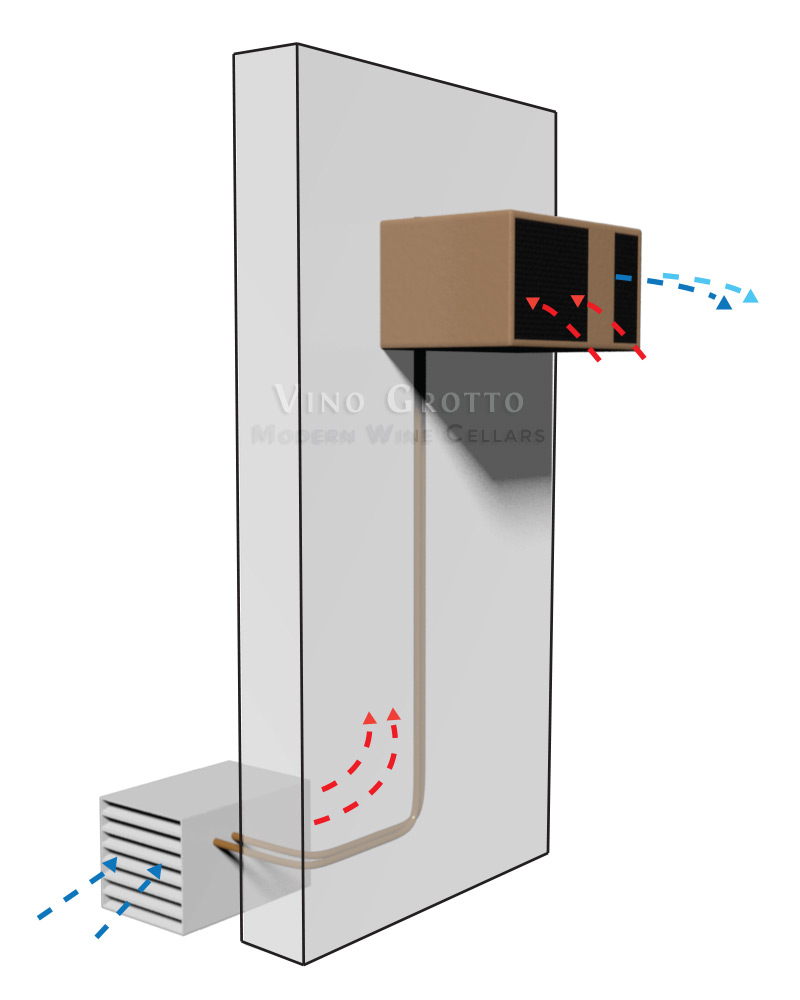
Split Systems
Starting at $1365
Split systems "split" up the cooling unit condenser from the evaporator, allowing for flexible installation and a quieter wine cellar. These units allow you to put the noisy condenser in place where noise isn't an issue.

Fully Ducted
Starting at $3589
Ducted systems are available as both self-contained and split systems. Cooling units can be placed 25 ducted feet away from the cellar and allows for the most flexible installation assuring minimal noise and visual disruption.

Room Volume
Avoid buying a cooling unit designed "up to" your room space and always go the size up if you're within 50-100 cubic feet of the manufacturer specified maximum. This means if you have a 300 cubic foot wine cellar you should avoid the 300 cubic feet units and step up to the 650 cubic feet units. With Cellar Cool units as an example, this upgrade is $100 (from $995 to $1095). Sizing up your cooling unit could save you years for a minimal cost increase.
Ambient Temperature
Another important thing to consider with your cooling unit is the ambient temperature of the environment. The greater difference between the 55° cooling temperature and the actual ambient temperature, the larger the unit you'll need. Lower end cooling units are designed up to a 30 degree differential (minimum 50° - maximum 85°) which is adequate for most interior spaces you heat and air condition (and some exterior spaces if you're lucky to live somewhere with year-round temperate weather).
For people who need to install their cooling unit outside of the 30 degree differential, the WhisperKOOL Extreme Series is what you'll need to look at for options.
The Difference Between Self-Contained and Split Cooling Units
When shopping for a cooling unit you'll notice that there's two different versions: self-contained and split.
Self-Contained
Self-contained cooling units are all-in-one boxes where the Evaporator and Compressor are grouped within the same housing. This makes self-contained units easy to set up but you're going to deal with extra noise and limited options for where the warm air is vented. A common mistake people make is putting a self-contained unit on the wall of their game room or other living space.
Split
Split cooling units, as the name implies, "splits" up the Evaporator and Compressor. You can put the noisy warm air condenser in a space away from the wine cellar where the noise and heat dissipation won't be annoying. The quiet, unobtrusive evaporator is still placed in the wine cellar. As a heads up, you'll need a licensed HVAC technician to install your split system cooling unit.
Ducting
On top of self-contained and split cooling units, you can choose to duct the units to avoid putting any physical piece inside of the cellar itself and instead have a more aesthetically pleasing (and space saving) wall vents. Depending on your unit, you'll have between 25 and 50 ducted feet to work with.
Whisperkool Cooling Units

Ceiling Mounted Split
Starting at $3449
Virtually invisible way to cool your cellar with ceiling installation

Fully Ducted
Starting at $3589
Fully ducted systems allowing for remote cooling and exhaust placement
Wine Cellar Racks
When filling up your newly built wine cellar with racks, you have ultimately have two choices: kit products and custom racks. Kit products are ready-to-assemble solutions with standardized components. These racks are pre-designed and manufactured in bulk making them cheaper and faster to ship than custom pieces. In contrast, custom wine racks are designed and built specifically for your wine cellar. These racks often have odd shapes and sizes, extra detail and craftsmanship and ultimately create a cellar straight from your dreams.
Modular Cellar Kits
Vino Grotto has several wine cellar kits which focus on modular components. Modular wine racks are made at the same height and are designed to look seamless when placed next to each other.
Typical Modular Wine Rack Styles:
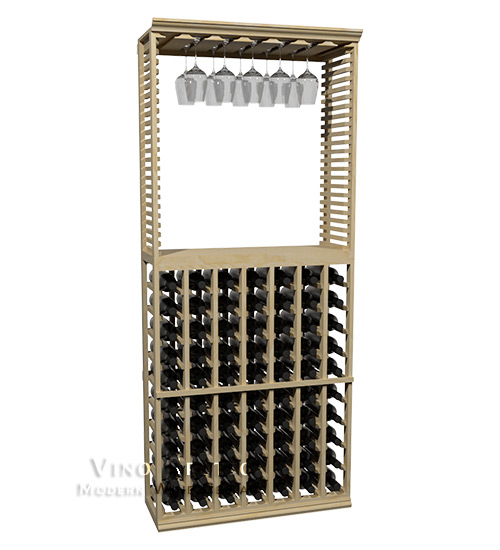
Tasting Tables
The centerpiece for most wine cellars, tasting tables create a flat surface for opening bottles and pouring wine
Custom Wine Cellars
On top of modular wine kits, many people choose to add some custom pieces to their wine cellar or even have an entire cellar made custom for their space.
Even if you're someone who wants to make a wine cellar out of kit products, you'll often discover limitations of space or room obstacles which require some changes to make everything work.
Custom wine cellar companies like Vino Grotto have the capability to make virtually any wine rack or cabinet you need for your space and for any application.
Vino Grotto has worked with customers throughout the country to help them make custom wine cellars for everything from small closets to large restaurants to even luxury yachts.

Let us help you get started
Vino Grotto has the know-how and experience to help build your perfect wine cellar. We've worked with home owners, DIYers, contractors, retailers, realtors, etc., and know how to make designs that fit your budget and time frame. We're proud to be one of the largest nationwide custom wine dealers while also maintaining exceptional product quality and customer service.
Get a Free Design for Your Project
Help support us by sharing this guide





